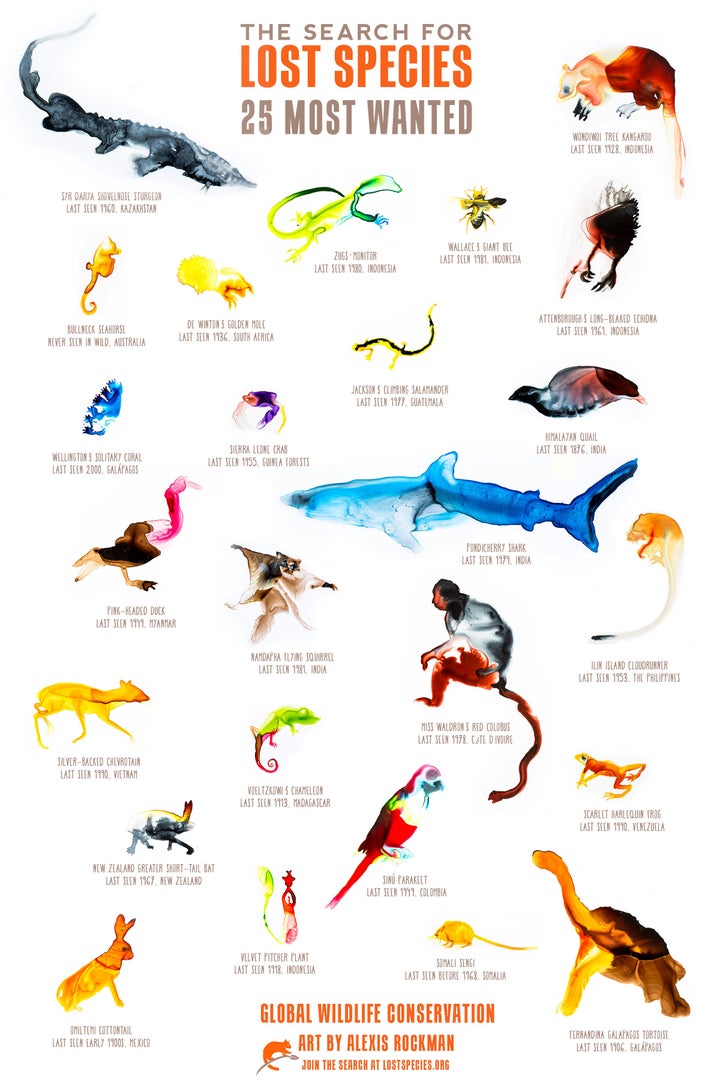WASHINGTON — The race is on to rediscover a list of 25 species that collectively have not been seen in more than 1,500 years.
There’s the Wondiwoi tree kangaroo, last spotted in 1928 in Indonesia; the pink-headed duck, missing since 1949; and the bullneck seahorse, a species native to Australia never before seen in the wild.
This week, Texas-based Global Wildlife Conservation launched “The Search for Lost Species,” described as the “largest-ever global quest to find and protect” animals and plants missing for decades.
Don Church, GWC’s president and director of conservation, said the organization’s “most wanted” list includes “cute and cuddly” species, the kind people are drawn to and that provide an opportunity to raise awareness about today’s biodiversity crisis.
“It’s about raising the profile both of the species that we’re looking for, but more so the places where they occur,” he told The Huffington Post. “The reason those places are important is because they have extreme biodiversity value, but very few people have heard about them. People hear about the Amazon basin, but they don’t think about the forests of Côte d’Ivoire or some of the other places where these flagship species and many of the other species occur.”
The current mass extinction of animals claims an estimated 150-200 species every day. Humans have sped up the species loss rate by roughly 1,000 times, according to a 2005 assessment.

The group’s list of 25 flagship species — none of which have been officially declared extinct — comes from a larger list of 1,200 species considered “lost” in more than 160 countries. GWC compiled the lengthy list with the help of experts at the International Union for Conservation of Nature. The organization is hoping to launch expeditions to track down species this fall. In addition to roughly $500,000 in funding that GWC plans to allocate to the project, the organization is looking for corporate sponsors and private donations.
Robin Moore, a conservation biologist and GWC’s communications director, said in a statement that for many of these species, “this is likely their last chance to be saved from extinction.”
To meet GWC’s definition of “lost,” the species must have been unseen by scientists for at least a decade. In some cases, species are thought to have gone extinct due to threats like hunting, habitat loss and disease. In others, species were believed to have existed in extremely small numbers or remote, inaccessible habitats, before their population was decimated or totally wiped out.
Church told HuffPost he expects some will be found. But even if they aren’t, there’s an excitement in the journey, he said, which could lead to a greater appreciation for the world’s biodiversity hotspots or the discovery of a species never seen before.
“It’s a message of hope and opportunity to still save these places and the species within,” he said. “And it’s not a message that’s going to put people into sort of their despair and lead them to throwing their hands up and saying — giving up, giving up on the biodiversity of our planet — which is easily done by people when all they hear the magnitude of the environmental crisis across the planet.”

